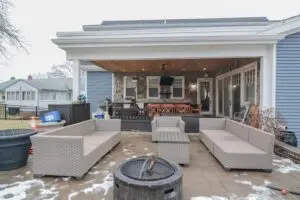Owning a home often means juggling multiple maintenance and repair issues, and knowing where to start can feel overwhelming. From cold attics and drafty basements to dripping faucets and more, prioritizing these tasks is essential for maintaining comfort, safety, and efficiency while staying within budget. A thoughtful approach not only ensures immediate problems are addressed but can also lead to significant savings over time.
Assessing the Issues
The first step in tackling home repairs is assessing the nature of the issues at hand. Problems that pose a risk to safety or could lead to further damage should take precedence. For instance, a leaking faucet may seem minor, but over time it can waste significant amounts of water, increasing utility bills unnecessarily. Similarly, poor insulation in attics or basements might make your home uncomfortably cold in the winter, while also driving up heating costs. Identifying which issues have the most immediate impact on your household’s safety, comfort, and budget will help guide your efforts.
Creating a Plan of Action
Once the most pressing issues are clear, a plan of action can be created. Safety-related concerns, such as faulty electrical wiring or structural issues, should always be addressed first. These problems can have serious consequences if neglected, from fires to collapses. Next, consider problems that might cause damage to your home over time. Water leaks, for example, can lead to mold growth and structural decay if ignored, resulting in higher repair costs down the line. Taking care of these problems early prevents them from becoming larger and more expensive projects.
Prioritizing Energy Efficiency
Energy efficiency is another area where prioritizing certain fixes can yield long-term benefits. Cold attics and basements are often indicative of poor insulation or air leaks, which can make your HVAC system work harder than necessary. Improving insulation or sealing drafts not only makes your home more comfortable but can also lead to noticeable reductions in energy bills. These upgrades may even qualify for rebates or tax incentives in some areas, making them an even smarter investment.
Budgeting and Cost-effective Fixes
Budgeting for home repairs can be challenging, especially if several projects demand attention. Start by tackling the fixes that offer the best return on investment, both financially and in terms of household well-being. For example, sealing air leaks and insulating spaces can be relatively low-cost improvements that have a significant impact on energy efficiency. Similarly, small plumbing repairs like fixing a dripping faucet or a running toilet can lead to substantial water savings over time. By addressing these cost-effective fixes first, you can free up resources for larger projects down the road.
DIY vs. Professional Help
In many cases, dividing tasks into those you can handle yourself and those that require professional help can also save money. DIY-friendly jobs, such as replacing weatherstripping or installing insulation, are manageable for most homeowners and can reduce labor costs. However, for complex issues like electrical work or significant structural repairs, hiring an expert ensures the job is done safely and correctly.
Revisiting and Revising Priorities
As you progress through your list of repairs, it’s essential to revisit and revise your priorities. New issues may arise, or you might discover additional savings opportunities through energy-efficient upgrades or preventive maintenance. Regularly reviewing your home’s needs helps you stay ahead of potential problems and keeps your living space safe and comfortable.
By focusing on safety, preventing further damage, and improving efficiency, you can systematically address your home’s maintenance challenges. Not only will this approach help you save money, but it will also ensure your home remains a comfortable and secure environment for you and your family.







